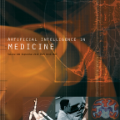The aim of this study is to discover new active-flow-control (AFC) techniques for separation mitigation in a two-dimensional NACA 0012 airfoil at a Reynolds number of 3000. To find these AFC strategies, a framework consisting of a deep-reinforcement-learning (DRL) agent has been used to determine the action strategies to apply to the flow. The actions involve blowing and suction through jets at the airfoil surface. The flow is simulated with the numerical code Alya, which is a low-dissipation finite-element code, on a high-performance computing system. Various control strategies obtained through DRL led to 43.9% drag reduction, while others yielded an increase in aerodynamic efficiency of 58.6%. In comparison, periodic-control strategies demonstrated lower energy efficiency while failing to achieve the same level of aerodynamic improvements as the DRL-based approach. These gains have been attained through the implementation of a dynamic, closed-loop, time-dependent, active control mechanism over the airfoil.
翻译:暂无翻译





